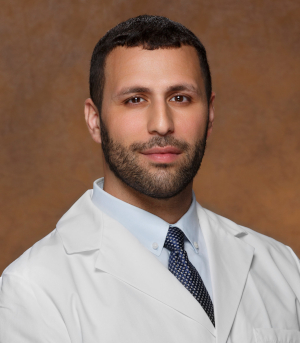More Memphis Area Liver Patients Receive Y-90 Treatment
A treatment for liver cancer in European hospitals now is growing in numbers in the Memphis area.
authors James Dowd
For the last couple decades, intra-arterial yttrium-90 radioembolization, or Y-90, treatment for liver cancer has been gaining ground in medical communities across the country. In use across Europe for many years, the therapy was introduced in the United States in 2000 and has been available in the Mid-South for several years.
In 2006, the Memphis Interventional Radiology Clinic (MIRC) opened an office at Baptist Memorial Hospital-DeSoto and in the years since the treatment has been offered to growing numbers of Memphis-area patients.
“There are more than 140,000 cases of metastatic colon cancer diagnosed in the United States every year, and many of the patients we see are those whose colon cancer has spread to the liver,” said Dr. Henry J. Dalsania, MD, an interventional radiologist at MIRC. “The Y-90 treatment is primarily for patients whose cancer can’t be treated through chemotherapy or surgery.”
The treatment option is becoming increasingly utilized because of educational efforts within the Baptist system, Dalsania explained. No longer considered an unproven or experimental treatment, Y-90 is becoming a more mainstream therapy for patients whose conditions aren’t appropriate for other therapies.
“The growth in our Y-90 therapy is directly related to our multidisciplinary approach and our collaborative efforts,” Dalsania said. “We have a great deal of communication between physicians to discuss all possible treatments for patients, and our interventional oncologists are skilled in determining a variety of treatment options that benefit our patients.”
In addition to the MIRC, which is affiliated with Baptist, Dalsania said other area medical facilities such as Methodist Le Bonheur Healthcare, St. Francis Hospital and West Clinic offer Y-90 treatments.
For many patients suffering from this type of liver cancer, surgery isn’t an option because tumors may be too large or numerous. The Y-90 treatment is less invasive, doesn’t generate many of the negative side effects often associated with chemotherapy, and typically is performed on an outpatient basis.
“This is a different kind of treatment because it isn’t curative, but instead it’s intended to slow the progression of the disease,” Dalsania said. “This treatment helps improve the quality of life.”
A 2011 report published by the Society of Interventional Radiology (SIR) deemed the treatment safe and effective.
“We knew that this unique interventional radiology treatment, done on an outpatient basis, which combines the radioactive isotope Y-90 into microspheres that deliver radiation directly to a tumor, was one of the best ways to give patients a treatment that doesn’t harm healthy cells,” Riad Salem, MD, said in the study. Salem is a professor at Northwestern University. “Now we know that patients can actually tolerate much higher doses of radiation than previously thought, which provides results in patients progressing on standard chemotherapy. While patients aren’t cured, their lives are being extended with less down time and their quality of life is improving.”
A 2014 SIR study found the treatment is similarly beneficial for breast cancer patients whose cancer has spread to the liver. The results were remarkably effective.
The study examined Y-90 treatment results of 75 women with breast cancer liver metastases. The study found the treatment “provided disease stabilization in 98.5 percent of the women’s treated liver tumors.”
Robert J. Lewandowski, MD, associate professor of radiology at Northwestern University Feinberg School of Medicine in Chicago, explained the findings and promoted the therapy’s use.
“Although this is not a cure, Y-90 radioembolization can shrink liver tumors, relieve painful symptoms, improve the quality of life and potentially extend survival,” Lewandowski said in the report. “While patient selection is important, the therapy is not limited by tumor size, shape, location or number, and it can ease the severity of disease in patients who cannot be treated effectively with other approaches.”
While radioembolization is palliative rather than curative, some doctors are using it as a second line treatment in conjunction with chemotherapy, Dalsania said. The procedure takes one to two hours in the medical facility, followed by a few hours of rest and recovery before the patient returns home.
During treatment, millions of microspheres of glass or resin beads filled with Y-90 are injected through a catheter from the groin into the liver artery leading to the tumor. The blood supply to cancer cells is blocked, and high doses of radiation target the tumor without damaging healthy tissue.
Common side effects include flu-like symptoms and body aches, spikes in temperature and fatigue.
Unlike chemotherapy, Y-90 does not typically cause nausea or hair loss.
Benefits of the treatment include the ability to direct higher doses of radiation at tumors and the nonsurgical, minimally invasive procedure. Risks include the chance of allergic reactions, infection and ulcers.
“We’re seeing some cases where Y-90 can shrink tumors to the point that surgery is an option,” Dalsania said. “This treatment is not a replacement for chemo or an alternative option, but it can sometimes assist with treatments to benefit patients without some adverse side effects.”
Patients who want to learn more about the treatment may contact the Memphis Interventional Radiology Clinic at 901-747-1007, send an email to memphisirinfo@msit.com or visit http://memphis-clinic.com.


















